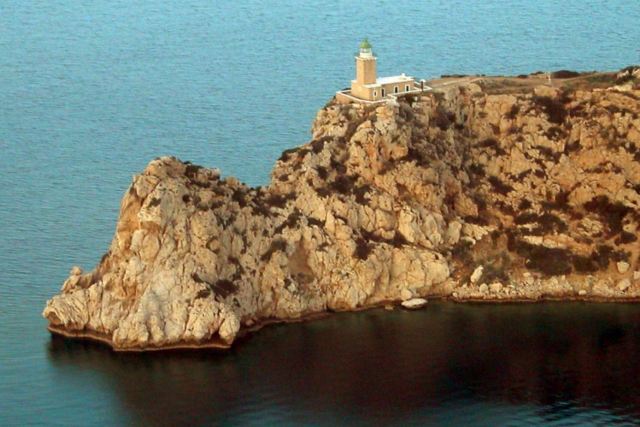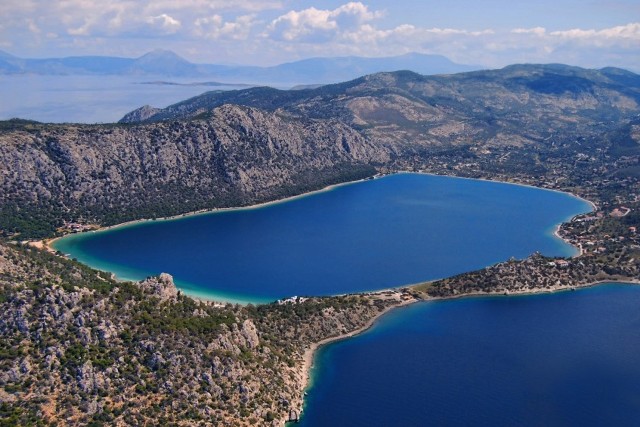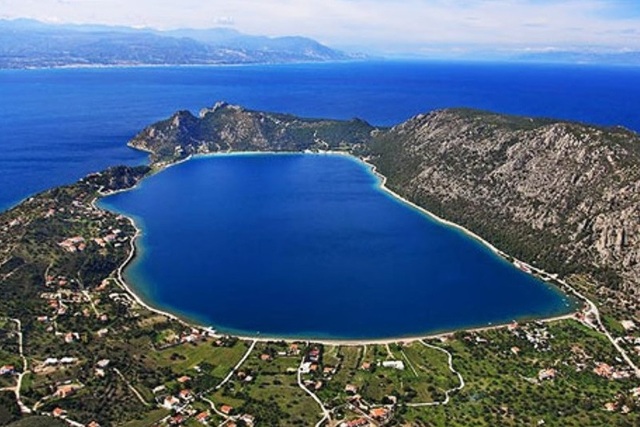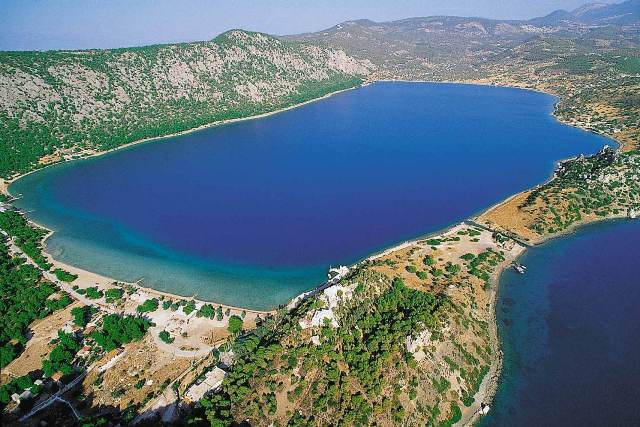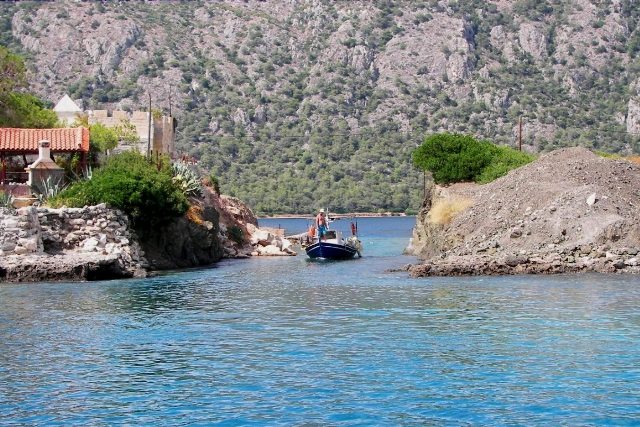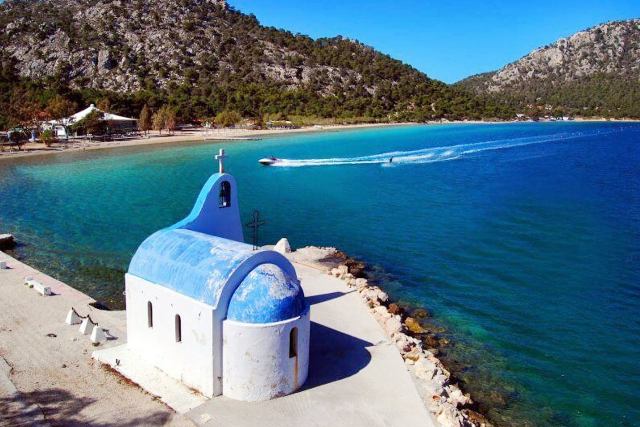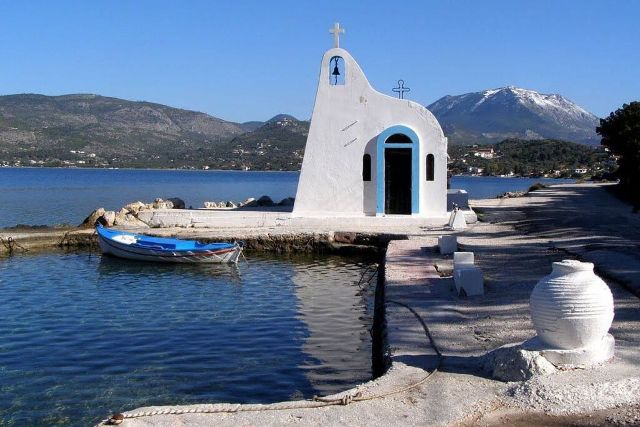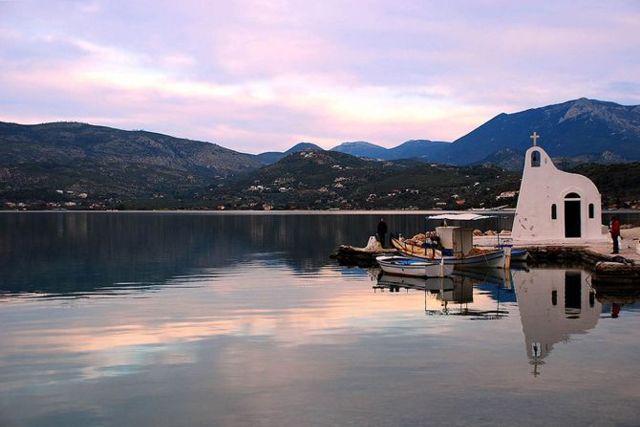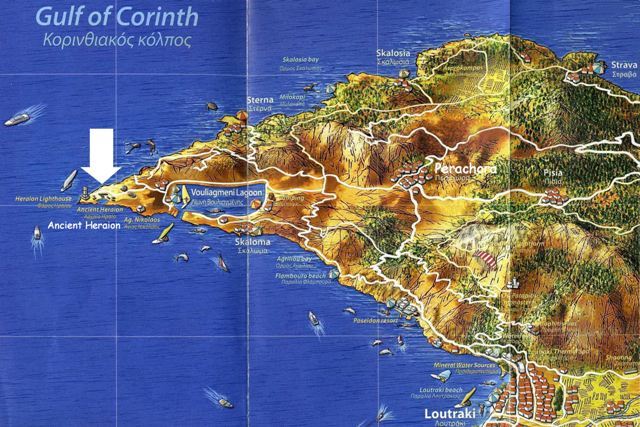Heraion & Lake Vouliagmeni
ANCIENT HERAION - Distance from Ermioni: 127 kms/2.25 hours
Ancient Heraion was a sanctuary to the goddess Hera and was in use from the Greek Dark Ages in the 8th century BC until the late Hellenistic period and the arrival of the Roman legions to Greece. The sanctuary belonged to the powerful ancient city of Corinth (Korinthos) for most of its time, and fell into disuse after the Romans sacked Corinth in 146 BC. The sanctuary was built on two levels, with temples to Hera on each level. The upper level temple was dedicated to Hera Limenaia and the lower temple, by the beach, was dedicated to Hera Akraia. The sanctuary slowly developed over the years to become one of the richest rural sanctuary's in the whole of Greece, and its location in a small cove with a sandy beach must have made the sanctuary complex look 'heavenly' to its ancient residents and visitors.
According to legend narrated by Euripides in his tragedy called "Medea", Medea, a high priestess of Colchis who was married to Jason (of the Argonaughts and golden fleece fame) buried their two sons at the sanctuary of Hera Akraia as she fled from Corinth. Some believe that Medea murdered her two sons due to Jason being unfaithful with Creusa, daughter of King Creon of Corinth, others believe that it was the Corinthians who stoned her children to death in revenge of their princess being murdered by Medea.
Originally excavated during the 1930s, under the direction of Humfry G. Payne, archaeological excavations at ancient Heraion are still ongoing and have uncovered temples, altars, large cisterns, aquaducts, a sacred pool, dining areas, an L-shaped 2-storied stoa and a Hellenistic agora. The excavations at Heraion have thrown up some unusual and interesting ancient building techniques, the 3-aisled temple of Hera Akraia is unique, and the 2-storey Stoa had a colonade of Doric columns on the lower floor level with Ionic columns on the upper level. On the Southern beach-side of the temple of Hera Akraia a large limekiln was discovered. This limekiln was used to reduce the marble of the sanctuary and temples into lime for the construction of the Hexamilion wall across the Isthmus of Corinth in the 5th century AD by the Romans.
Visitors to Ancient Heraion will get the chance to have a wonderful refreshing swim from the sanctuary beach, or a chance to do some 'cliff-jumping' from the surrounding rocks for the more adventurous, as the sea in the sanctuary cove is both deep and clear.

Lake Vouliagmeni also known as Vouliagemi lagoon, 3.5 kms from Ancient Heraion, the lake is a picturesque area surrounded by many cafes and tavernas, with local fishermen still going about their daily business, as they have for thousands of years. During the ancient period the lake was called Lake Eschatiotis. In 1962 the international film The 300 Spartans staring Richard Egan with Sir Ralph Richardson and Diane Baker was filmed around this salt water lake. The rocky geography of the present Vouliagmeni shoreline offered a more realistic appearance to ancient Thermopylae than the actual present historical site, where the sea has receded 8 kms since 480 BC. Former King Constantine II of Greece (1940-2023) 'loaned' about 5,000 men of the Royal Hellenic Army for the making of this film, to act as the Spartan and Greek warriors, as well as the Persian and Medes invaders. The music for the film was written by famous Greek composer Manos Hadjidakis. Todays tavernas and cafes situated along the shore offer visitors a chance to have a refreshing drink, a cool swim and a tasty meal following their historical exploration of Ancient Heraion.
Malagavi Lighthouse is situated above ancient Heraion, on the Western tip of Cape Melagavi in the Gulf of Corinth. One of the oldest stone lighthouses in Greece, built in 1897, that is still in operation. You can get to the lighthouse from the Heraion car-park by walking up a small pathway to the right of the concrete ramp that leads down to the sanctuary of Heraion. There are some spectacular views from the lighthouse of the Corinthian Gulf, the rugged coastline and unusual rock formations in the sea.
Ancient Heraion is located at the far Western tip of the Perachora peninsula, opposite Ancient Corinth, and beyond the Corinth Canal, Loutraki (Ancient Thermae) and Perachora (Ancient Peraea). The sanctuary of Heraion is situated 25 kms (30 minutes by car) NNW of the Corinth Canal and lies just 3.5 kms beyond the Lake Vouliagmeni Lagoon. There is a free open car-parking area above the Heraion sanctuary, and you will have to walk down a winding concrete ramp to the upper sanctuary, and past the small church of Aghios Yiannis that overlooks the lower sanctuary and sandy beach. Although Heraion and Perachora are beyond the Corinth Canal geographically, they are still officially part of Corinthia and the Peloponnese. Admission to the Heraion archaeological site: Free
